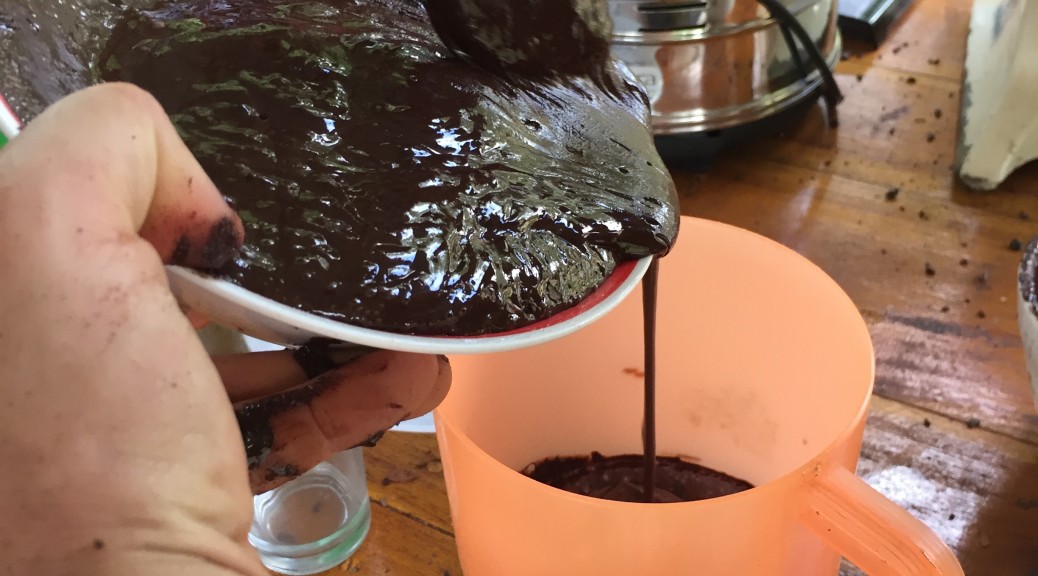
At Community Carbon Trees, planting all different kinds of trees gives us plenty to harvest. We are growing sustainable business with rainforest reforestation in the center. The maximum positive impact to mitigate climate change on the planet is to reduce carbon emissions to lower temperatures and balances the water cycle. Trees on the Equator do all of this for us, and more. Planting new forests of trees with fairly paid local workers on their own farms creates a longterm commitment to rainforest conservation. Building a full circle of complementary entrepreneurial opportunities that empower women makes the reforestation work even more valuable.
For example, we plant hundreds of Theobroma Cocoa trees on every participating Costa Rican owned farm. In just four years, we have already begun harvesting the fruits. It all started when a cocoa chef from San Francisco Jay Holacek contacted us, seeking to participate with our active and organized community. Of course, we said yes. The local farmers all brought some of their cocoa harvest and we placed the beans all together inside a wooden box for fermentation for approximately one week. Often other fruit is also mixed in to accelerate the process. We learned to check the beans for good fermentation by cutting them in half and observing that no fungus has grown on the beans. This is key to flavorful, smooth tasting chocolate. The process is time-consuming and delicate. More and more, with the world demand for chocolate and dwindling resources, organic, wild crafted chocolate is a sought after delicacy. For now, we are happy to be learning the complicated process.
After proper fermentation, the beans must be dried. Most chocolate chefs prefer sun dried cocoa beans. They must be kept dry and for approximately three days and then stored in airtight dark place. We have learned that making chocolate is like making fine wine. Every harvest is different depending on the soils, the weather, the shade, the fermentation, and the drying and toasting process.
After the beans are dried, toasting the beans to the desired smooth flavor begins. On average, toasting takes about 30 minutes at 340 degrees. Then the shells are cracked open and the women roughly grind away the shells and break the beans into smaller pieces called “nibs”. Some people like to eat the nibs plain and we have already had success selling them at local farmers markets.
One the shells cracked away from the beans, we used a blow dryer to “winnow” away the shells from the cocoa “nibs”.
Now everything smells incredible and tasting begins in earnest. We used an old champion juicer to rough grind the toasted cocoa beans into cocoa “liquor”. This is a slow process. We ran the paste through twice to create a shiny, smooth liquor.
Now comes the sugar. But not just any sugar. Our chocolate is extra special because our ACCT community group grew and prepared the brown sugar too. Using traditional methods, the sugar was cooked down and poured into seasoned wooden molds. We toasted the grated brown sugar or “tapa dulce” to make sure it was dry before mixing in 35% sugar to %65 pure, cocoa liquor.
Our 1 kg batch of chocolate liquor was ground all night long with a fabulous machine that our chef loaned us. The next morning, we awoke to a completely homogenous and smooth paste, sweet, rich, flavorful and free of bitterness.
Stay tuned as we grow more opportunities from the trees you help us plant with your generous sponsorships. Thanks for your continued support. The more trees we plant the more chocolate we can make. The more businesses we grow from the trees, the more sustainable the rainforest can be.